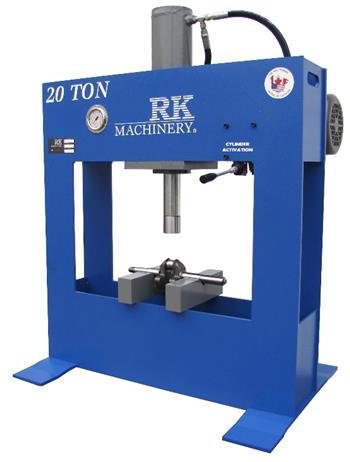Handmade Jewellery is a rapidly expanding market and with the rise in popularity of online marketplaces and the power of social media sites, it’s never been more accessible for consumers to find and purchase hand-crafted pieces.
Through the conventional means of working the metal into to a desired shape, creating the texture and polishing to perfection, the process for a single piece can take several hours... that’s where the
Hydraulic press comes in.
Hydraulic Press... Sounds Complicated?
The science behind how a Hydraulic press works is fairly simple, for all its simplicity though, the results are outstanding. Hydraulic presses consist of a heavy duty frame, a lower bed and a central hydraulic arm; this compresses the chosen material into a pre-determined shape.
The shape is achieved through the use of a silhouette die, which is situated on the lower bed of the press; this is basically a strong piece of metal with the shape cut out of it. Through intense pressure delivered from the Hydraulic arm the material substrate is forced through the cut-out forming the desired shape.
Once this quick process is complete there is the simple task of removing the excess waste material from around the formed shape and polishing the piece up, this can be done traditionally or with the aid of a rotary tumbler.
Equally as important as the quality of the Jewellery is the quality of the press itself,
Hydraulic Press Manufacturer PressMaster are a long established specialist company offering a variety of high quality presses including their very own custom build service. This offers clients the chance to specify exactly what they need; resulting in a purpose built Hydraulic press perfectly matching their requirements.
Quality vs Quantity – Finding the right balance
One reason that makes Handmade jewellery such an attractive prospect to consumers is that it’s different from the mass produced mainstream jewellery, each aspect of every single piece has been designed by a sole individual and subsequently has one critical factor: Personality. So how can we achieve producing items in larger quantities without sacrificing the all-important quality?
The hard work is taken care of by the Hydraulic press but there are two key areas before and after this process that play a pivotal role in producing quality items.
The first is in the preparation of the material, adding an embossed area, pattern or texture can be done whilst the substrate is in its flat state, making it simpler to handle but more importantly enhancing it aesthetically.
The Latter comes when the shape is finished and polished up, namely how will it interact with the other components of the piece? Holes will need to be drilled to attach the necessary functional components such as hooks or chains but are there other enhancements that can be made?
A competitive edge
As the demand has grown for Hand crafted Jewellery so too have the number of jewellers and with an increase in competition it’s vital to have the upper hand, using a Hydraulic press can give you just that.
Whilst it goes without saying that the main benefit is speed, another ’fringe’ benefit is that the Silhouette dies used to produce the shapes come in different sizes. Creating different sized pieces effectively means that you can take an existing design and expand it into a Jewellery line.
In short a Hydraulic Press has the potential to revolutionize a Handmade Jewellery business, it's quicker, less labour intensive and it’s still up to the Jeweller to create the design, increasing quantity whilst maintaining quality.

